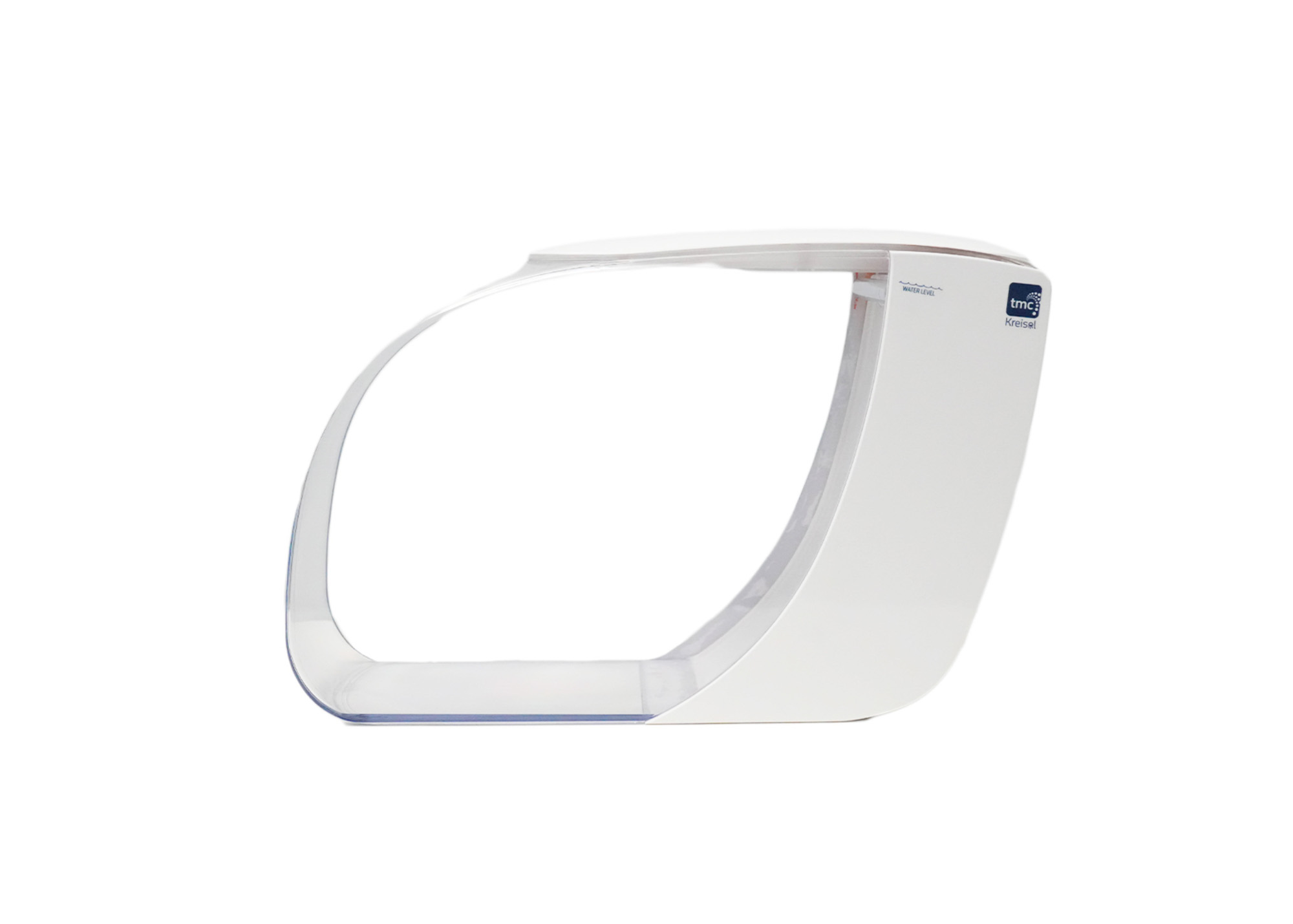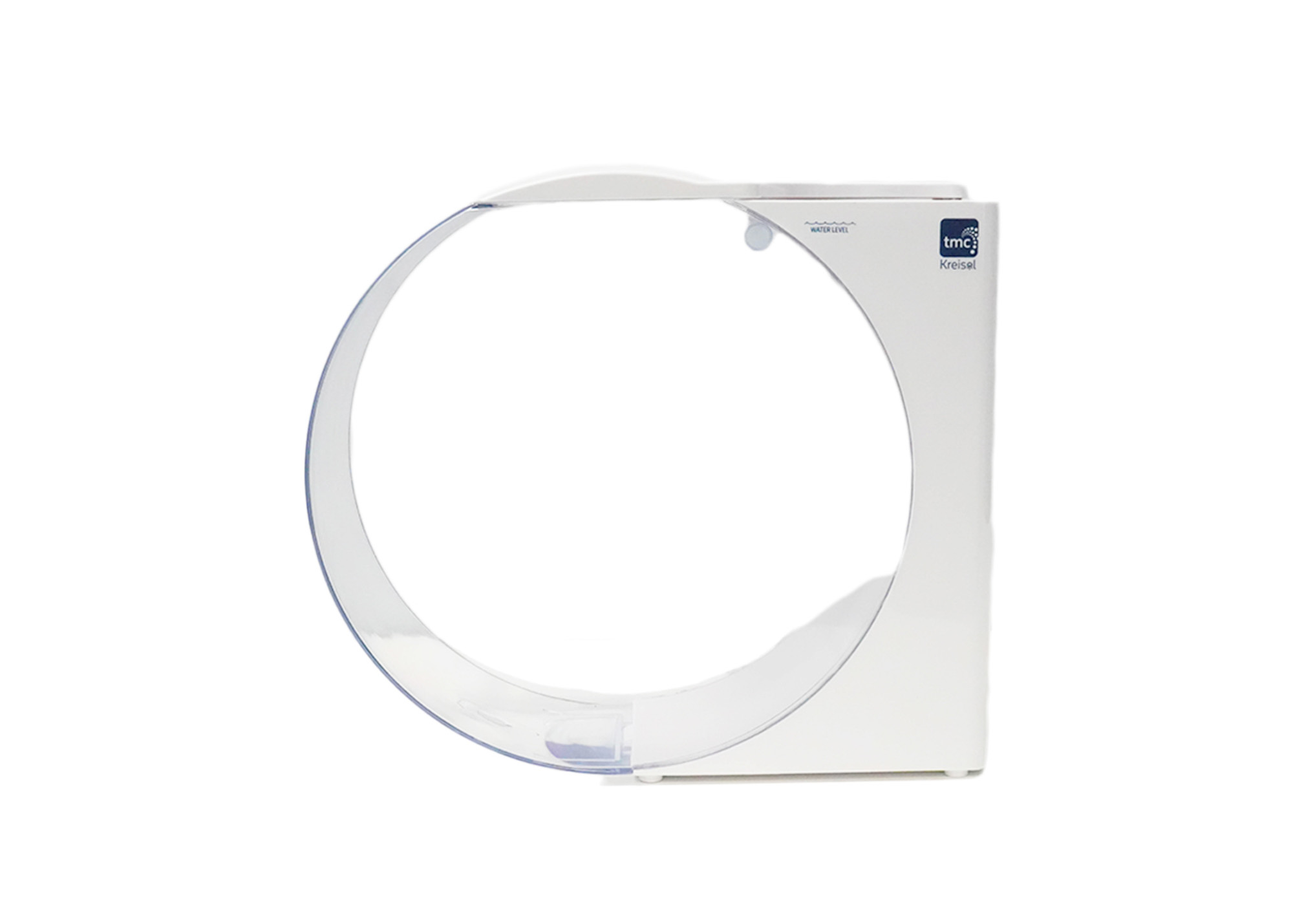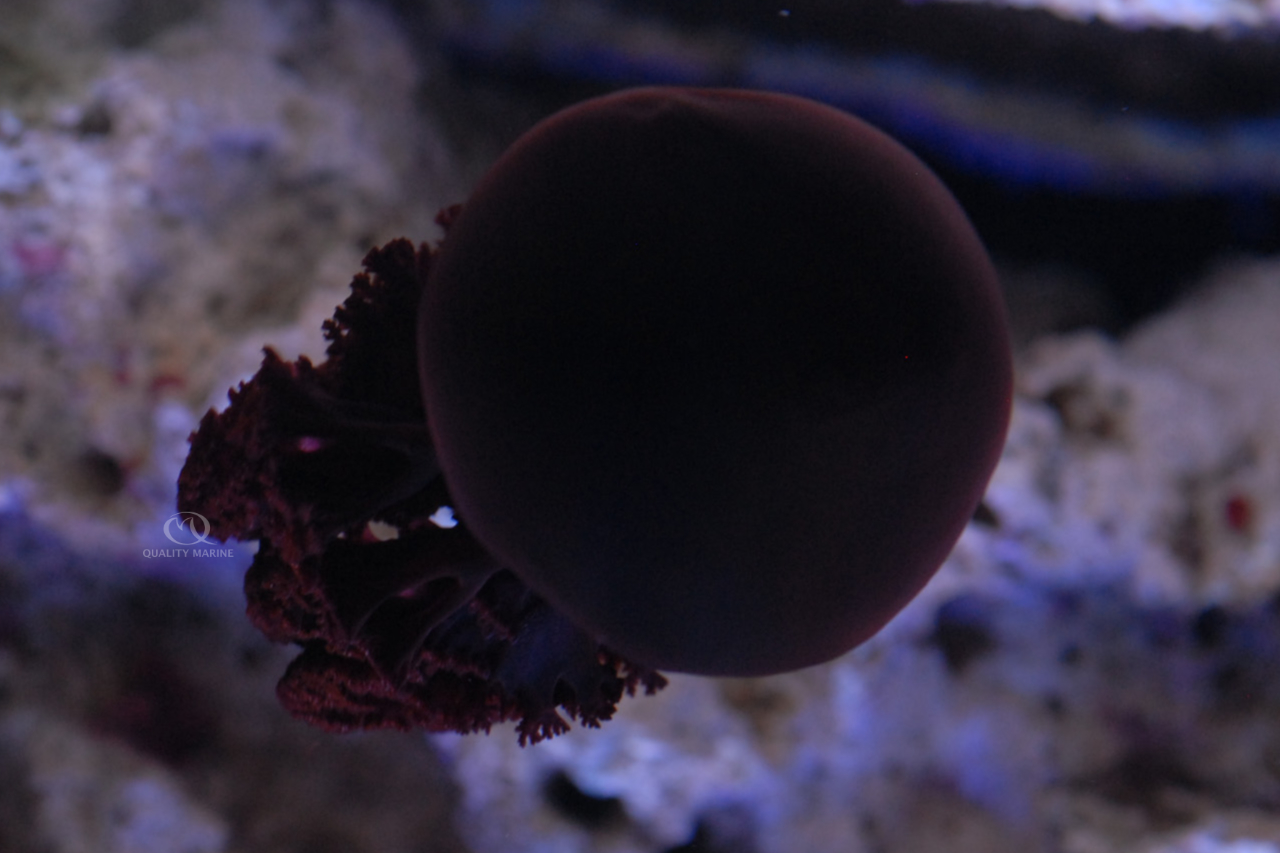Keeping Up with the Kreisels

Some of the most magical displays in public aquariums belong to jellyfish, but sadly, up until now, they have been very infrequently seen in homes. There are just not that many commercially available units that are suitably sized for most people's houses. With the recent advent of both 2.5- and 4-gallon options from TMC, a whole new era of jellyfish keeping has begun. Keeping jellyfish at all was completely impossible until the late '60s when a biologist needed a way to get jellyfish from the Arctic back to his lab in Germany, which would be easy, but he wanted them there alive! To do so, he invented the Kreisel.
Kreisel tanks are a type of aquarium utilized to display jellyfish and, more recently, to sometimes rear larval fish. They are simplistic displays by nature as decorations are just something for the jellyfish to get caught up on. It turns out that jellies are generally fairly easy to care for, with one (somewhat huge) catch: jellies don't swim very well, and sooner or later they get pulled into the filtration units of the displays they are in. They also need clean water and don't deal well with bubbles, all of which used to make filtration a real challenge.

In the new Kreisel tanks from TMC - Tropical Marine Centre (yes, they're in the UK, and that's how you spell it there), the water flow is very gentle. Water is pushed in a circular pattern around the perimeter of a circular tank. This water pattern is called a gyre and it pushes the jellyfish and all their food into the center of the display. The intake for the filter is hidden outside of the flow pattern, meaning that water is transferred freely from the tank to the filter, making it nearly impossible for the jellies to get sucked up into the filtration.
Setting up your TMC Kreisel tank is really straightforward, but it starts with finding a good spot for it. We love them on desks, bedside stands, and kitchen counters. These aquariums take up very little space, so they're ideal for areas that you see a lot but where there isn't a ton of extra room. Also, make sure these areas don't get any natural sunlight to help prevent algae growth. A nearby power outlet will make your life a lot easier too (you gotta plug into something!). After that, the actual assembly of the TMC Kreisel tank is really straightforward: rinse the media well, then put in the media and the filter pads.
All that's left after that is filling the system with water. Make sure that you use a quality salt mix like Tropic Marin and ensure that it is fully mixed before adding it to the system (and while doing water changes). Like any aquarium, Kreisel tanks should be cycled, and this process is no different than it is for any other aquarium. We strongly recommend that you utilize Dr. Tim's One and Only product to kick start this process. We have a full article on cycling tanks here: https://www.qualitymarine.com/news/first-timer-cy...

Once your Kreisel is cycled, it's time to add your jellyfish. Any jelly you choose will need to be acclimated to the display it is going into. We recommend drip acclimation, and again, there is an article about this topic on this site as well. The only difference between acclimating jellies and any other fish is that the jellies cannot be exposed to the air when you move them. With jellies this small, aquarists will usually use a ladle to scoop up the jelly from the bag they came in and gently lower them into the tank; warm the ladle in the tank while you're acclimating so that it isn't shockingly cold. Then just turn on the flow and the lights!
Feeding jellyfish is also very straightforward, as they don't have a feeding trigger like most fish do. If an acceptable morsel comes in contact with their stinging cells, they eat it. While they will relish live food like Brine Shrimp, aka Artemia, which are available at your LFS from Nutramar, they will also accept frozen foods that are an acceptable size. Gamma Brine plus Spirulina, Gamma Brine plus Omega, and Gamma Copepods are all great foods for them. Larger jellies can take things like Gamma Mysis as well. A benefit of utilizing live Artemia is that they will usually live in the Kreisel until the jellies eat them all, and so overfeeding is easily managed. With frozen foods, overfeeding is to be avoided as it can cause nitrogen problems, which are bad for the jellies and serve as fuel for nuisance algae. This begs the question: how much is too much? For frozen foods, start by thawing out about a quarter to one-half of one blister pack, and let it come up to tank temperature before feeding it. Pour this directly into the tank and the flow of the Kreisel will push the food into the feeding zone for the jellies. Try to feed only larger chunks and whole brine to reduce the amount of uneaten food left over. Do not target feed them with a baster, as this can damage the jellyfish. If any food is left after 30 minutes or it settles out, suck up as much as possible with a baster or pipette. If all the food is gone, feed a little bit more the next day until you find just the right amount. Feed only once per day. If you utilize dried food, make sure it is totally hydrated before introducing it into the display. If you miss a day or two, it isn't a big deal as long as they are regularly fed otherwise. If you're going to be gone for more than a couple of days, you're going to want a well-trained assistant to get your jellyfish some chow.
Tank maintenance is also very easy and should be familiar for anyone who has kept any kind of marine tank before. Conduct regular water changes and test the water consistently to make sure you aren't having nutrient spikes or large pH swings. If either of these becomes a problem, think about decreasing the amount of food and increasing the volume of your water change; start with about 10%-15% weekly and go up from there if need be. Clean the glass and top off the system with fresh, clean, de-chlorinated water as water evaporates from the system. That's it!

Suitable for a wide range of jellyfish, TMC Kreisel tanks are ideal for species like Moon Jellies (Aurelia aurita). Moon Jellies are one of the most common jellyfish in all the world's oceans, save one. They're absent from the Arctic. This means they are very adaptable to a wide range of temperatures, ticking yet another box in the “easy to keep” column. If you opt for Moon Jellies over, say, Blubber Jellies or Violet Jellies, you should definitely go for the TMC Kreisel 15 tank, as the added volume will be good for these slightly larger specimens.

Blue Blubber Jellies (Catostylus mosaicus) are another great choice for the home Kreisel tank. Most of the ones we see in marine aquarium keeping are some shades of blue, but they can range from almost pure white to a navy blue so dark it looks black. Occasionally, you will see some Blubbers that are a deep reddish-brown. Blubber jellies have a very fast pulse to their bell that is often described as staccato.

Violet Jellies (Mastigia sp.) are incredibly ornate and remain very small, ranging between only one and four inches long, making them absolutely ideal for the TMC Kreisel 10. These are incredibly common jellyfish and are sometimes found in freshwater lakes. They reproduce easily and are sometimes available as aquacultured specimens, though achieving this in the home aquarium does require some effort and a couple of different tanks for different stages in their lives. This is another article altogether.
Most of these jellies have lost their sting, and so would likely be popular even if they weren't so gorgeous, which they are! Maybe you've never thought about having a jellyfish tank, but they offer a lot in wow factor and star power. They are always very skinny, being wide and tall, but not very deep (front to back), and so they can be put in places where they won't take up the whole space. By design, Kreisel tanks are very minimalist, and as a result, these tanks are always very Zen. Does this sound as good to you as it does to us? Head to your LFS, have them get you a TMC Kreisel tank, and always ask for sustainably harvested or aquacultured jellies from Quality Marine!